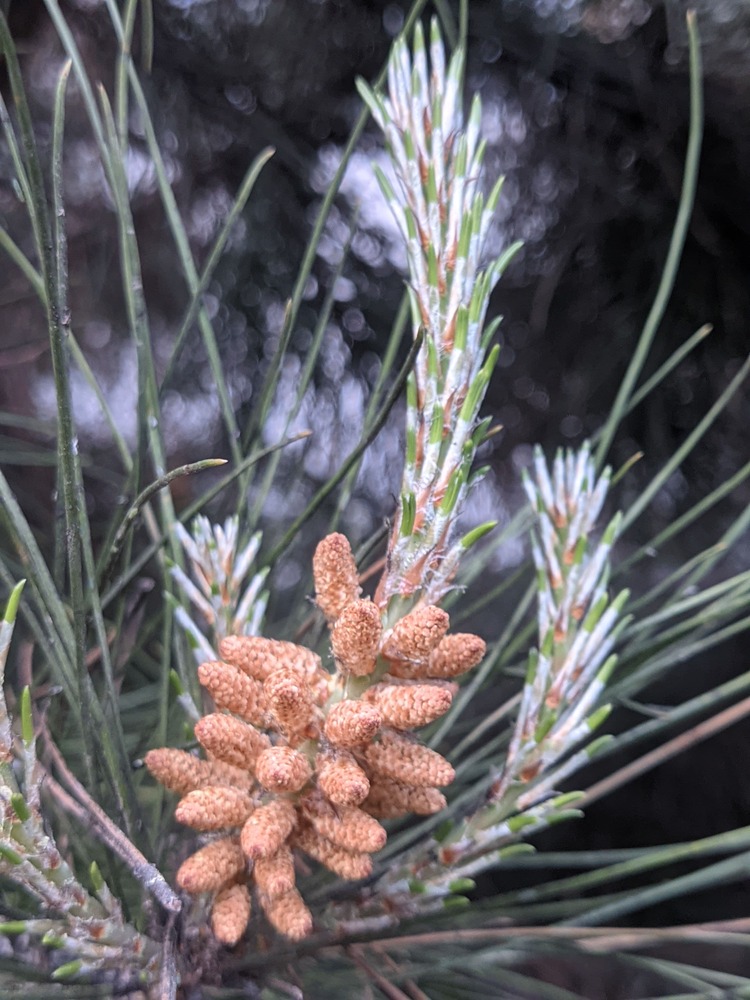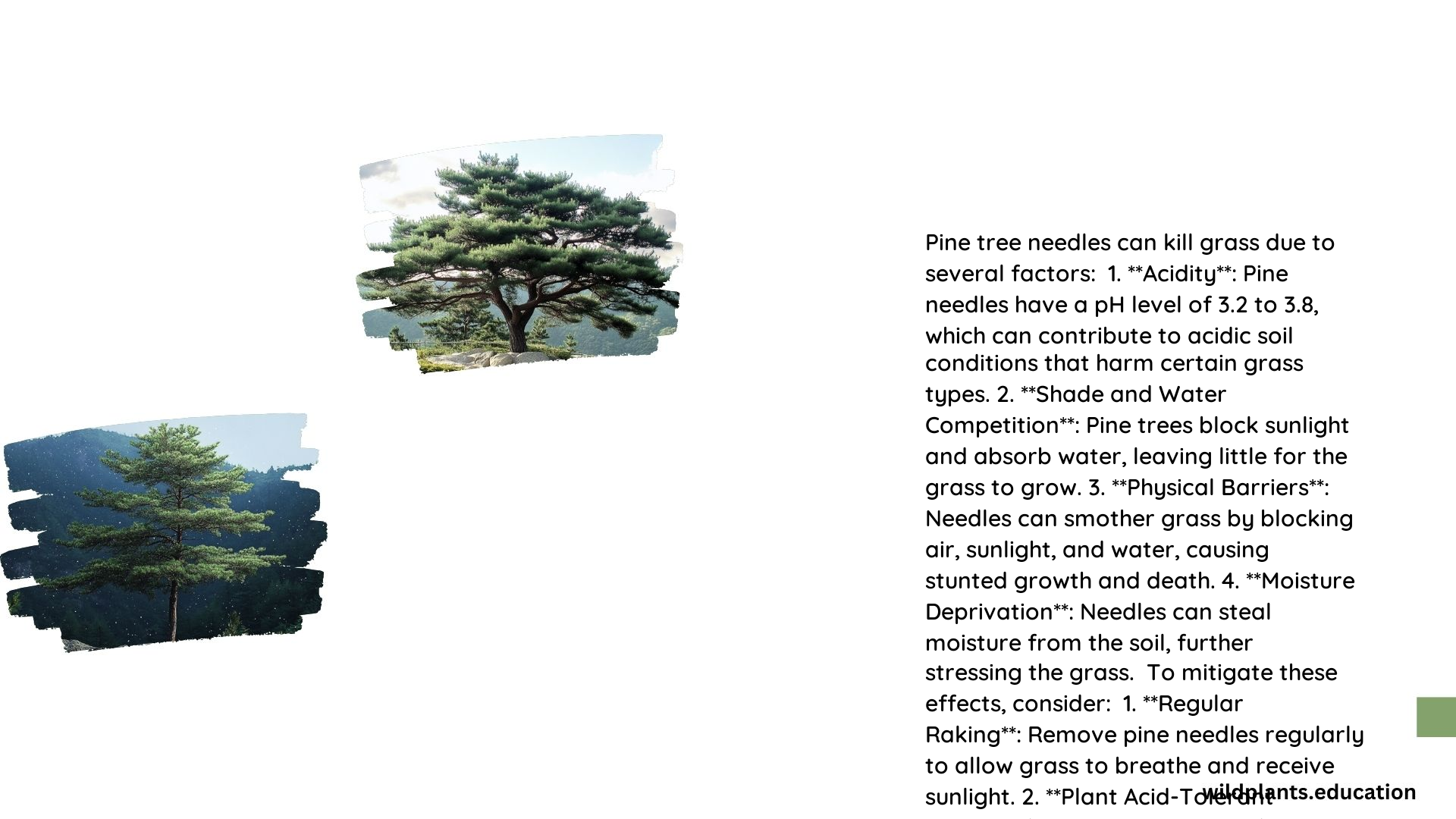The topic “Pine Tree Needles Kill Grass” is a common concern for gardeners and landscapers. Pine tree needles can have a detrimental effect on grass due to their physical properties, which can block sunlight, reduce water penetration, and suppress air circulation. However, pine needles can also be used as a beneficial mulch when applied correctly. This comprehensive guide will explore the biochemical and physical reasons why pine tree needles kill grass, the potential use of pine needles as mulch, and effective strategies to prevent pine tree needles from harming grass.
What are the Biochemical and Physical Reasons Why Pine Tree Needles Kill Grass?

Pine tree needles do not directly kill grass due to acidity, as the myth suggests. The actual issue lies in the physical effects of the needles on the grass. When pine needles accumulate on the lawn, they:
- Block Sunlight: Pine needles create a dense layer that prevents sunlight from reaching the grass, leading to reduced photosynthesis and growth.
- Reduce Water Penetration: The needles can act as a barrier, preventing water from reaching the grass roots, which can cause drought stress.
- Suppress Air Circulation: The dense layer of needles can reduce air movement, leading to increased humidity and creating an environment conducive to fungal diseases.
How Can Pine Tree Needles Be Used as Mulch?

Pine tree needles can be used as mulch, but it is essential to understand the benefits and drawbacks:
Benefits of Using Pine Needles as Mulch:
- Weed Suppression: Pine needles can effectively suppress weeds by blocking light and preventing seed germination.
- Soil Temperature Regulation: Mulch helps regulate soil temperature, keeping it cooler in summer and warmer in winter.
- Aesthetics: Pine needles can add a decorative touch to garden beds.
Drawbacks of Using Pine Needles as Mulch:
- Acidification: While pine needles are not acidic themselves, they can acidify the soil over time as they decompose, which can be detrimental to plants that prefer alkaline conditions.
- Nitrogen Depletion: As pine needles break down, they consume nitrogen from the soil, which can lead to nitrogen deficiencies in plants.
Recommended Application of Pine Needles as Mulch:
- Apply a 2-3 inch layer of pine needles as mulch.
- Pine needles can remain effective as mulch for 3-6 months, depending on weather conditions and decomposition rates.
How Can You Prevent Pine Tree Needles from Harming Grass?
To prevent pine tree needles from harming grass, follow these strategies:
- Regular Raking: Rake up pine needles regularly to prevent accumulation and ensure sunlight and water can reach the grass.
- Pruning: Prune pine tree branches to reduce needle fall and allow more sunlight to reach the grass.
- Soil Management: Maintain healthy soil with proper aeration, watering, and fertilization to help grass compete with the effects of pine needles.
Recommended Frequency of Raking:
- Rake every 2-3 weeks to prevent needle accumulation.
Adjustments to Soil Management:
- Improve Soil Drainage: Ensure the soil drains well to prevent waterlogging, which can exacerbate the effects of pine needles.
- Maintain Soil pH: Monitor and adjust soil pH to ensure it remains suitable for the grass species.
By understanding the biochemical and physical reasons why pine tree needles kill grass, the potential use of pine needles as mulch, and effective strategies to prevent their harmful effects, gardeners and landscapers can maintain a healthy, thriving lawn even in the presence of pine trees.
